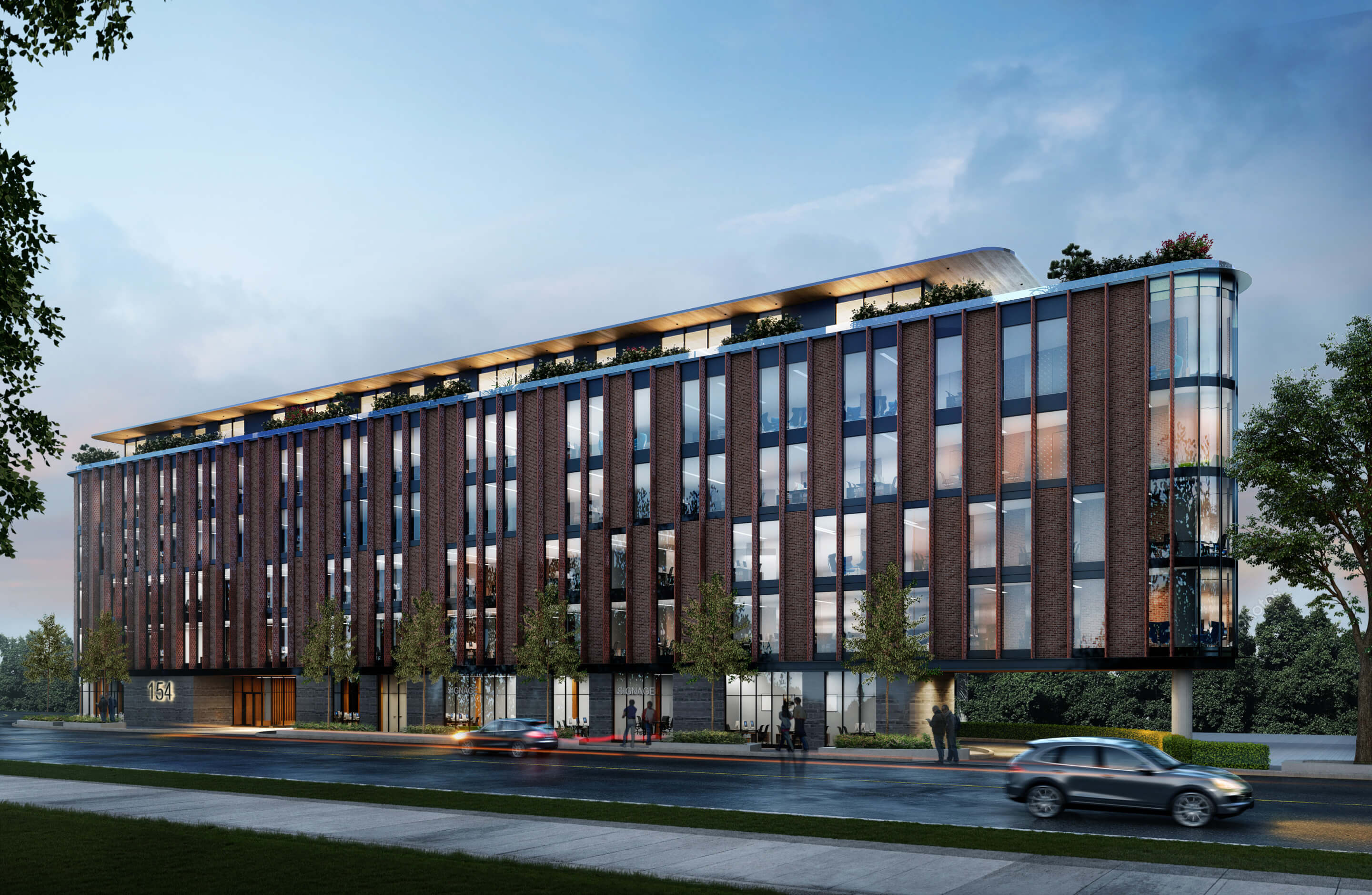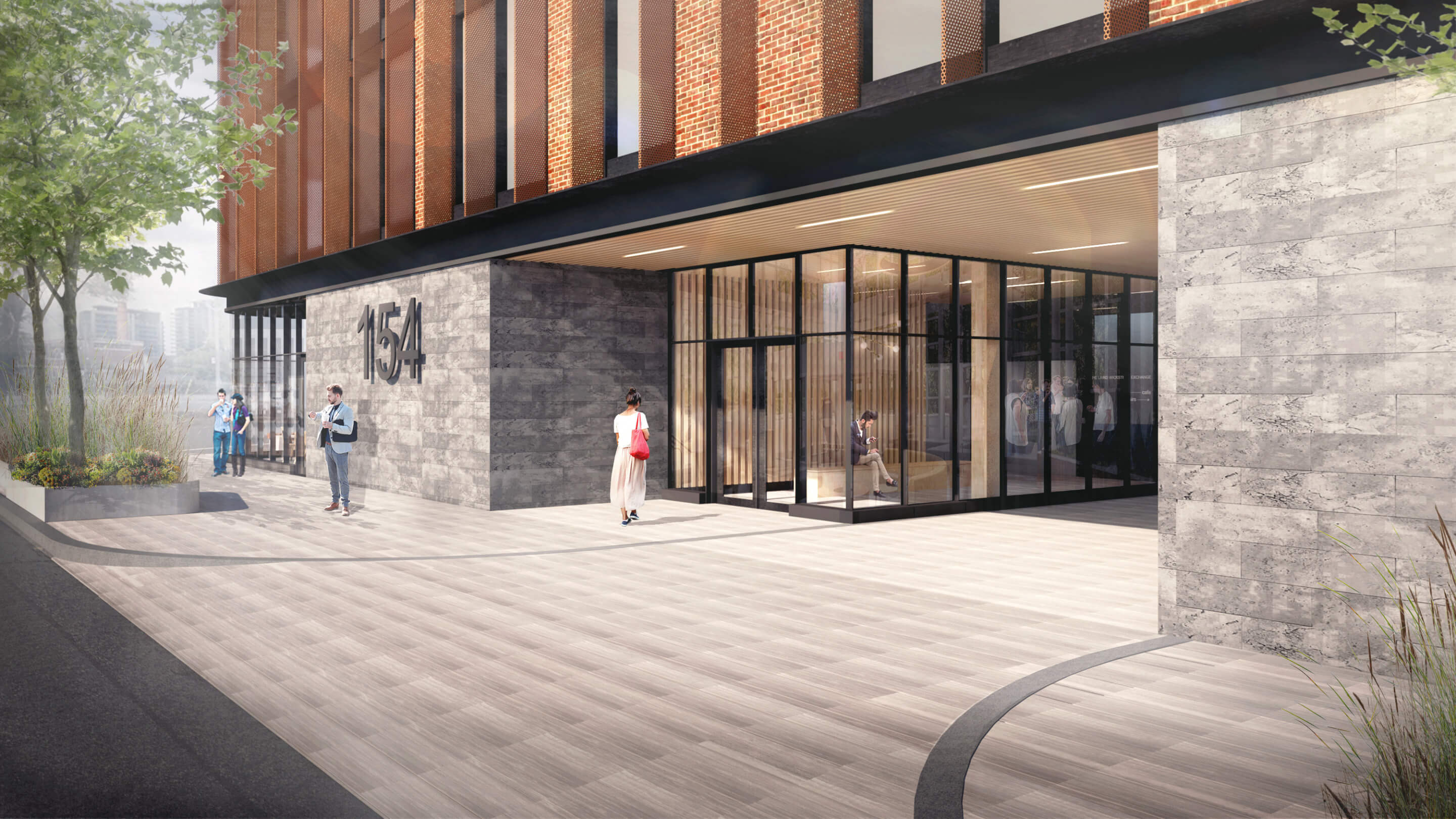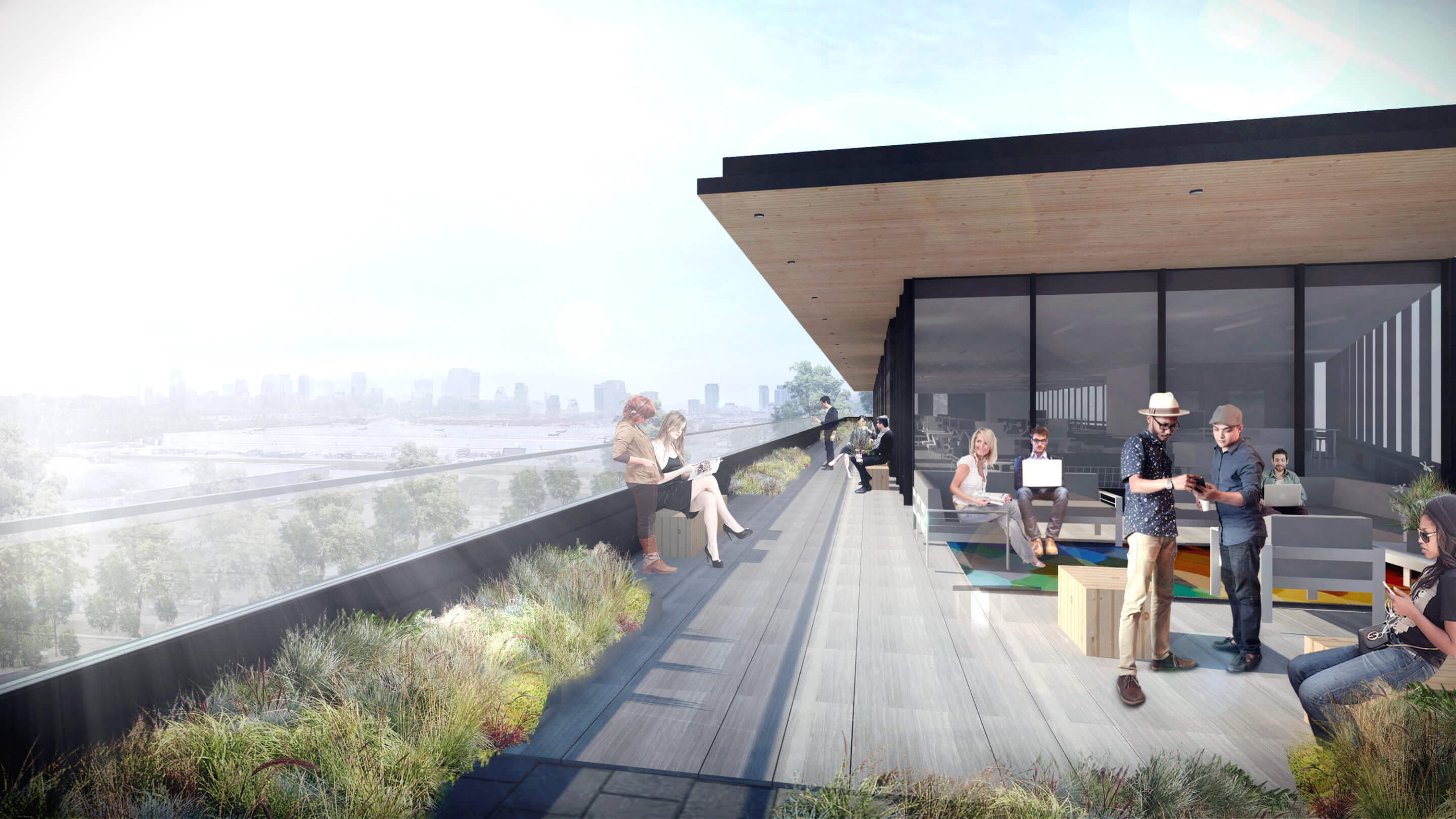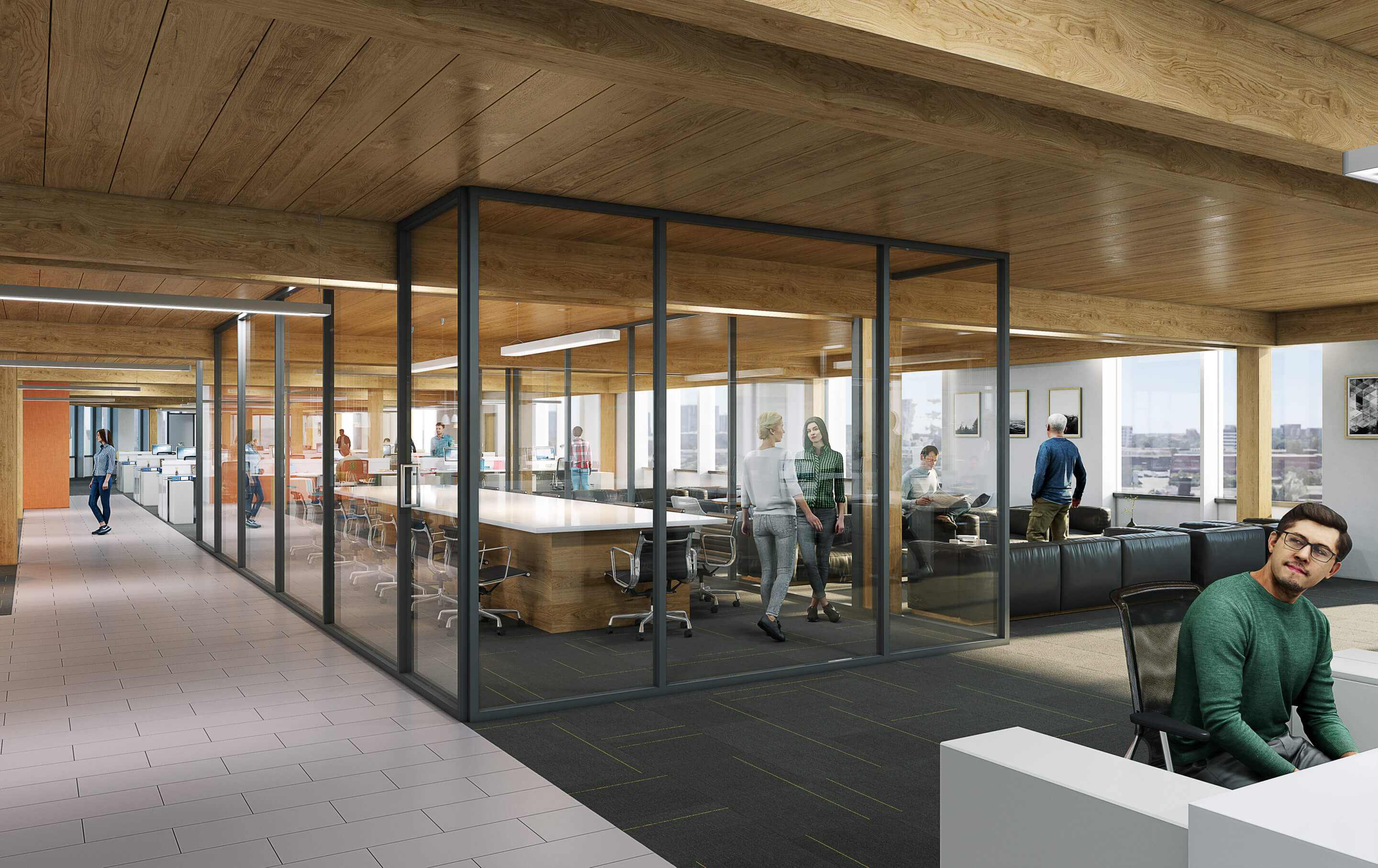Canada suffers no shortage of flatiron buildings, with historic examples dotting the provinces from Toronto to Vancouver to Lacombe, Alberta, and beyond. Canada also enjoys its status as a hotbed of mass timber construction with Quebec serving as an epicenter of sorts for the movement. However, these two things—flatiron building design and the use of engineered wood products—have never yet been combined.
That could change with the Leaside Innovation Centre (LIC), a six-story flatiron office building proposed for Toronto that will employ engineered wood elements throughout including cross-laminated timber (CLT) floor plates and glulam beams and columns. Per the project website, the LIC is among the first Toronto buildings to take advantage of a change in Ontario Building Code permitting for heavy timber structures up to six stories tall. Provided that planning approvals go through this May, construction is slated kick off shortly thereafter at the development site at 154 Wicksteed Avenue in Leaside, an affluent neighborhood northeast of downtown Toronto. If this schedule sticks, occupancy could begin in early 2024.


Making the most of an irregular but prominently located lot, the LIC team refers to the Wicksteed Avenue development site as a “gateway” to the “emerging” Leaside business district. “This building is the new class A office building, and healthy structures will be in demand going forward,” developer Charles Goldsmith told AN in an emailed statement.
Designed by Toronto-based architecture and design firm studioCANOO, the finished building, in addition to enjoying a considerably lowered carbon footprint thanks to the use of renewable forest products in lieu of concrete and/or steel, will weigh roughly 25 percent less than a comparable conventional structure, reuding load and minimizing the use of concrete in the foundation. Cladding the structure in a thin-brick veneer panel system further adds to its lightweight nature while also referencing the former historic-industrial trappings of the surrounding neighborhood and improving the building’s insulation and airtightness. studioCANOO’s design features a 40 percent glass-to-wall ratio that “minimizes the size of mechanical systems required in curtain wall buildings,” per the firm. Additionally, the building’s sustainable electrical grid and air distribution system will be entirely out of sight, tucked away underfloor.


Joining studioCANOO on the LIC design team are contractor Gilliam Group, landscape architects LANDinc, and Moses Structural Engineers.
Greg Latimer, principal of studioCANOO, elaborated on the origins of the project and the larger mass timber movement to AN:
“When we began this project back in 2017 we proposed a mass timber structural system to the client. They were immediately intrigued by the possibility of recreating a contemporary version of the highly desirable 19th century warehouses that dot the downtown core. The first mass timber mid-rise building in Toronto was just getting underway at the time but since then many projects with mass timber structure have been in development approvals and are now starting to break ground. I think this indicates that mass timber has reached a tipping point and will become more commonplace both in our local market and throughout North America in the coming decade. These buildings, with their many benefits, are being well received by owners and tenants and it gives architects another major tool to improve the overall sustainability of their projects.”
In addition to its inherently sustainable nature as a building constructed from engineered wood products, the LIC’s interior spaces will feature 11-foot-tall ceilings and plenty of exposed wood, which together with an abundance of natural light and easy access to outdoor green space, intends to foster a healthier and more productive work environment—obviously important for a commercial office building. Tenants on the sixth floor will have access to a spacious, south-facing terrace while ground-floor tenants will enjoy their own exterior amenity space on the north side of the building. The project also entails the creation of a planted parklet at the corner of Clarke and Wicksteed, which will be adjacent to a planned ground-floor cafe.


Complementing the project’s sustainable bona fides, LIC will be a convenient five-minute walk from Leaside station, a forthcoming stop on the new Eglinton Crosstown light rail transit line due to open later this year. There will also be two levels of parking tucked beneath the building, with 20 percent of the subterranean space devoted to parking for electric vehicles. There’s also plans for a secure indoor parking area for bike commuters with space for up to 30 bikes.
“Our triangular site offered an opportunity to reinterpret the classic flat iron building with a contemporary approach employing a mass timber structure,” added Latimer. “Exposed wood structure, open, light-filled floor plates and a dynamic building form contribute to a striking building on this gateway site to the Leaside Business Park.”
AN will revisit the LIC when it begins to take form in Toronto.



 العربية
العربية